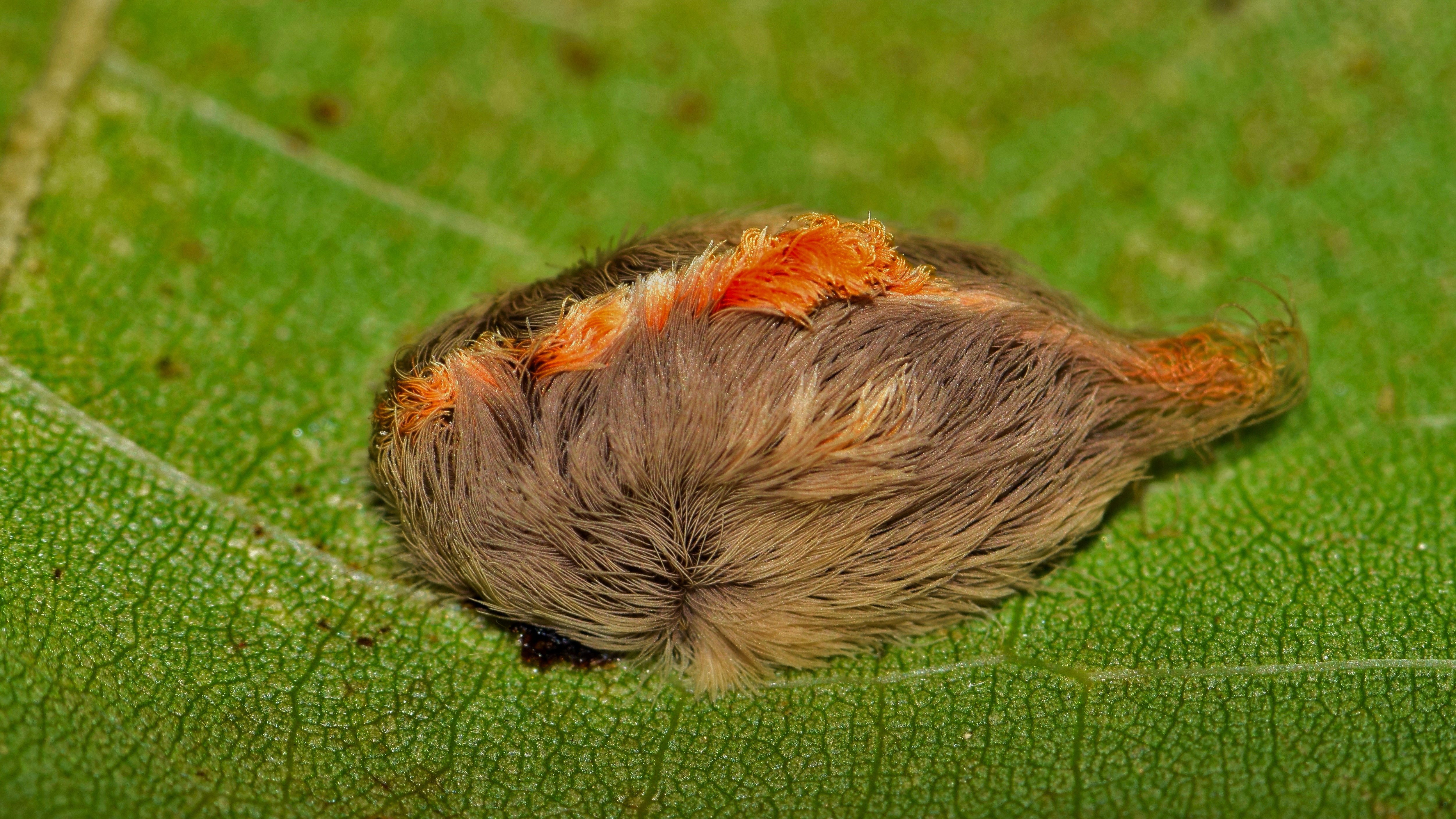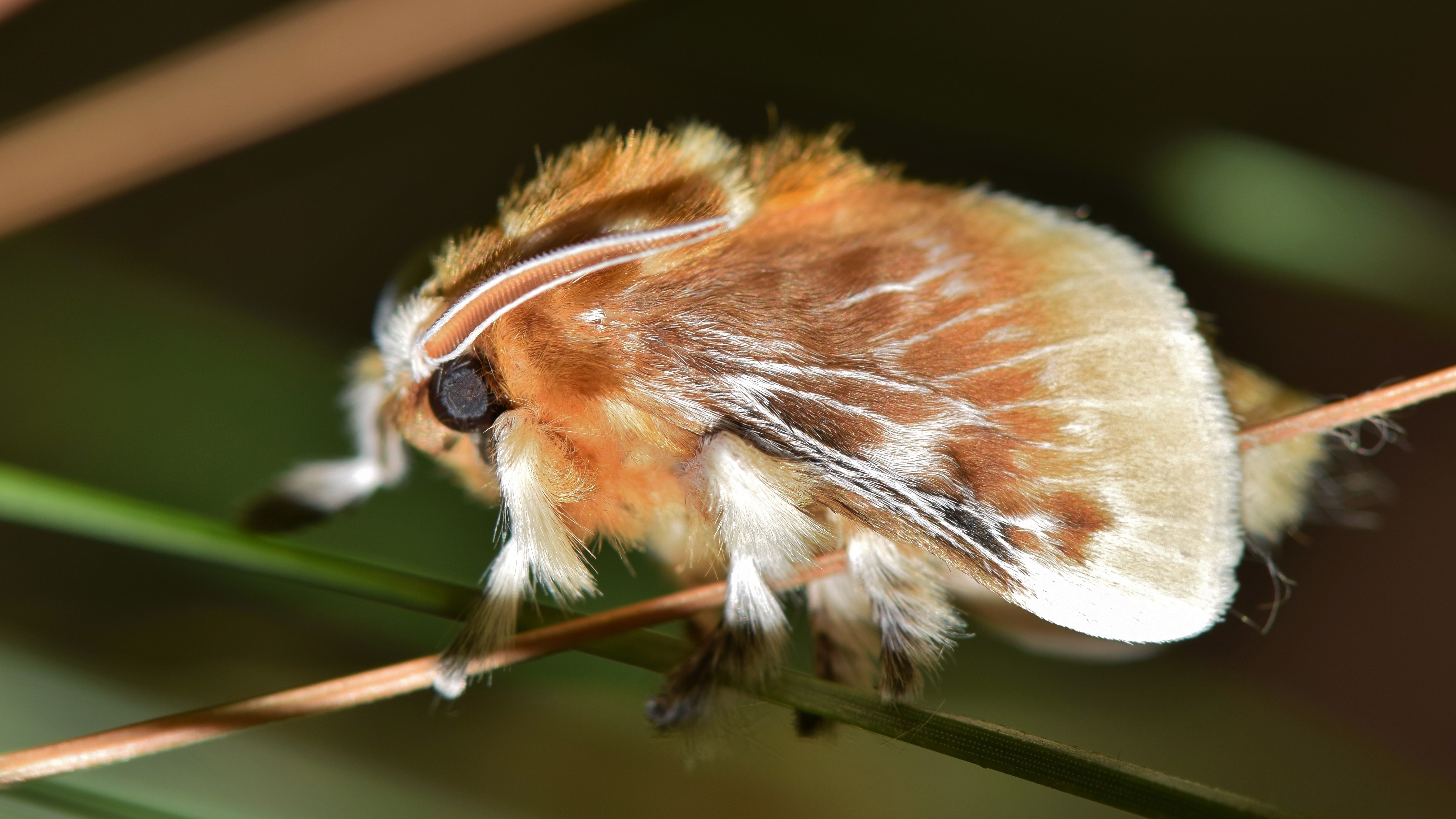
Don't be fooled by the asp caterpillar's innocent look: Its fluffy coat conceals dagger-like spines with a painful venom that hospitalizes dozens of people in the U.S. every year.
Now, scientists have discovered proteins in these caterpillars' venom that may explain how the bristle-covered creatures pack such a punch.
"Anecdotally, the pain is very bad," study lead author Andrew Walker, a researcher at the University of Queensland's Institute for Molecular Bioscience in Australia, told Live Science. "The pain is long-lasting and said to be excruciating; people describe it as like touching coals or having suffered blunt force trauma, like being hit with a baseball bat."
Asp caterpillars, also known as pus caterpillars due to their furry appearance, are the larvae of moths. Their hidden, venomous spines are a defense mechanism against predators. For the study, published on Monday (June 10) in the journal PNAS, the researchers examined venom from the caterpillars of the southern flannel moth (Megalopyge opercularis) and the black-waved flannel moth (M. crispata). Both species are common across North America and parts of Central America.
Related: Toxic hairy caterpillars invade Maine
Their venom contains proteins that bind to cells once injected, which then send "super, super potent" pain signals to the brain, Walker said. While this is the usual pathway for venom, asp caterpillars' proteins — named "megalysins" — change shape before boring into cells.
"They form something like a little donut and punch a hole in the cell," Walker said. "We think that when they punch holes in the cells, that turns [the cells] on to send these strong pain signals to the brain."

The toxins' painful punch could boil down to these proteins shape-shifting to become donut shaped as they drill into the victim's cells — a mechanism also observed in some bacteria, suggesting a common origin for toxins in bacteria and asp caterpillars.
"The structure of these pain-causing toxins is almost identical to toxins from bacteria," Walker said. "We found that the gene encoding these toxins had been transferred from a bacterium to the ancestors of these caterpillars hundreds of millions of years ago, and then subsequently been recruited as a venom toxin."
The bacteria that transferred the gene 400 million years ago likely belonged to a group called Gammaproteobacteria, which includes disease-causing species — such as E.coli and some strains of Salmonella — that also punch holes into cells. The recipient was probably an early representative of a group of insects called Ditrysia, which almost all living moths and butterflies belong to.
Bacteria can insert their DNA into the genome of other organisms in a process known as horizontal gene transfer (as opposed to vertical gene transfer, which is when parents pass on their genes to their offspring). But it's extremely rare for bacteria to pass on genetic material to a caterpillar, and for that caterpillar to pass it on to its descendants, because several conditions must be met, Walker said.
The bacteria would have had to come into contact with a caterpillar by infecting it, for example, then insert DNA into the nuclei of the host's cells. "But not just any cells," Walker explained. "It has to be those cells that are going to develop into sperm and eggs, so they can be passed down to the descendants of that caterpillar when it grows up and becomes a moth."
The discovery sheds light on the role of horizontal gene transfers in the evolution of animal venoms and on the understudied world of caterpillars and moths. While it remains unclear how the transfer occurred, generally "it shouldn't happen and that's why it's so rare," Walker said.







